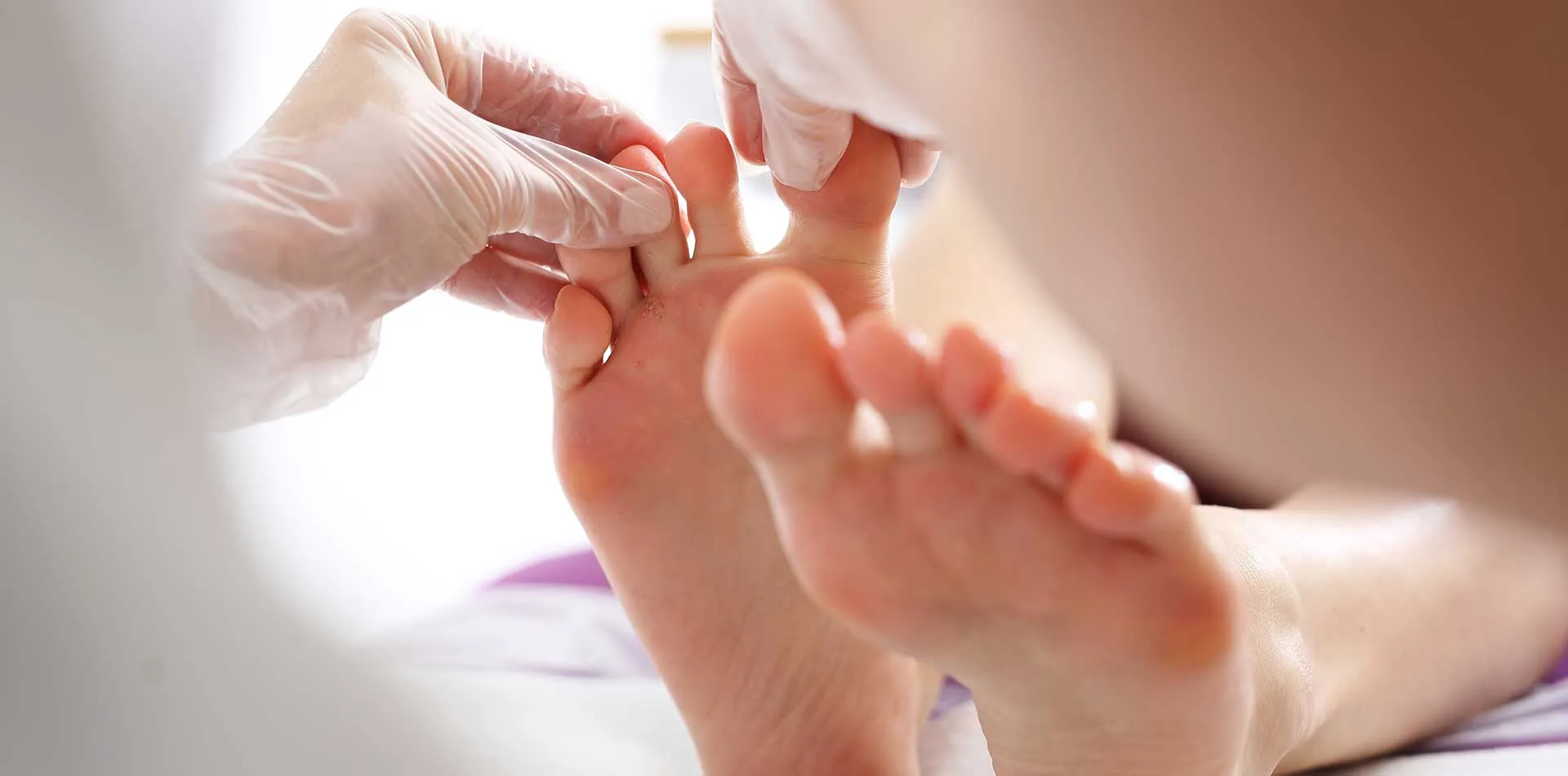
Nail fungus causes a white or yellow spot under the tip of the fingernail or toenail, resulting in discolored nails, thickened and crumbled at the edge. Mild nail fungus condition is not a cause of concern and may not require treatment. However, when nail fungus is painful and causes thickened nails, self-care methods and medications do not work, then treatment is needed, and the condition may often come back.
Signs of nail fungus include thickened, whitish to yellow-brown discoloration of nails, brittle, crumbly or ragged and distorted in shape. A dark color - caused due to debris building up under the nail and a slightly foul smell. Nail fungus usually affects fingernails, but it's often seen in toenails.
Talk to the doctor when self-care steps do not work, the nail gets discolored, thickened or deformed and when you have diabetes and see signs of nail fungus.
Fungal nail infection happens due to various fungal organisms (fungi), a common type being dermatophyte. Yeast and molds may also lead to nail infections.
Fungal nail infection may occur at any age but is more common among older adults. When the nail ages, it becomes brittle and dry, resulting in cracks that allow fungi to enter. Other factors are reduced blood circulation to the feet and a weakened immune system.
Toenail fungal infection begins with the athlete's foot (foot fungus), spreading from one nail to another. But the disease does not spread from one person to another.
Factors that raise the chance of developing nail fungus are diseases like diabetes, circulation issues or a weakened immune system, minor skin, nail injury or a skin condition, like psoriasis and heavy sweating. Other reasons are age factors - being older resulting in reduced blood flow, more years of exposure to fungi and slower growing nails. Also, history of athlete's foot or walking barefoot in damp communal areas, including swimming pools, gyms and shower rooms.
Nail fungus gets painful, causing permanent damage to the nails in severe conditions. The infections may spread beyond the feet in extreme conditions due to a suppressed immune system caused by medication, diabetes, or other conditions.'
With diabetes, there will be reduced blood circulation and nerve supply in the feet and a high risk of bacterial skin infection (cellulitis). Even a slight injury to the feet, like a nail fungal infection, may lead to a more severe complication. Consult the doctor when you have diabetes and observe signs of nail fungus.
These habits may limit the occurrence of nail fungus or reinfections and athlete's foot, which in turn causes nail fungus:
• Wash your hands and feet regularly and after touching an infected nail, and make sure to moisturize nails after washing.
• Trim and file nails straight across and smoothen the edges, disinfect the nail clippers after each use.
• Wear sweat-absorbing socks and breathable material shoes.
• Protect your feet with footwear in pool areas and locker rooms.
• Do not use nail polish and artificial nails
• Énsure your nail salon uses sterilized manicure tools for each customer.
Patient Experience